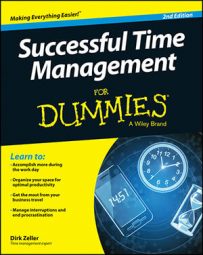Many people receive more material via snail mail and email in one day than they can read in year. No one wants to miss news or seem out of it, but few people have time to read, let alone organize, the printed gridlock paralyzing their inboxes and mailboxes.
The question isn’t how to handle the information, because you can’t. All you can do is decide what’s important and try to limit what you receive. You may have an information-overload problem if you
Have stacks of periodicals around that you intend to read but never do.
Download e-books or electronic whitepapers that you hope to read or have backed-up e-newsletters in your tablet.
Buy books that sound good, only to get home and find that they’re already on your shelf or in your tablet.
Get frustrated because you haven’t read your weekly news magazine in six months.
Here’s how to cut down on the document overload:
Cancel subscriptions that you don’t read regularly. Don’t immediately renew subscriptions to magazines you read infrequently, whether that’s online or print. Take a break for a couple of months and see whether you really need them or miss receiving them.
Move to Internet-based subscriptions. Most quality publications now offer Internet-based subscriptions. They save time because you can search issues by topic and you can read only the articles that interest you. You can also search topics by date.
Get off mailing lists. Unsolicited correspondence easily makes up 60 to 80 percent of your daily incoming mail. If you’re on one mailing list, your name is bought, sold, and bartered to numerous others before you can say “spring catalog.”
Take a sabbatical from the news. The news can be negative, biased, and sensationalized to attract an audience. Don’t let that be you. If you’re interested in a topic, research it in depth (remember books?). You may find that your news sabbatical turns into a permanent vacation. (If you do need a news fix, look for the online version of your newspaper of choice.)
Create a tear file of all the articles or papers you do want to read. A tear file helps you decide quickly what’s worth your time and what isn’t.
It’s simple: Tear out articles you want to read from trade publications, magazines, newspapers, and so on and file them in your tear file. Throw the rest of the publication into the recycle bin. Carry your tear file with you all the time, so whenever you’re waiting — in traffic, at the doctor’s office, at the car repair shop — you use your time productively. If the same article remains unread in your tear file for more than a couple months, pitch it.
You can also create this with the electronic news, trade reports, and other information you want to get to. Create a file in your tablet that is your tear file. Then start placing the articles or even the links to the articles so you can review them when you have a few moments.

